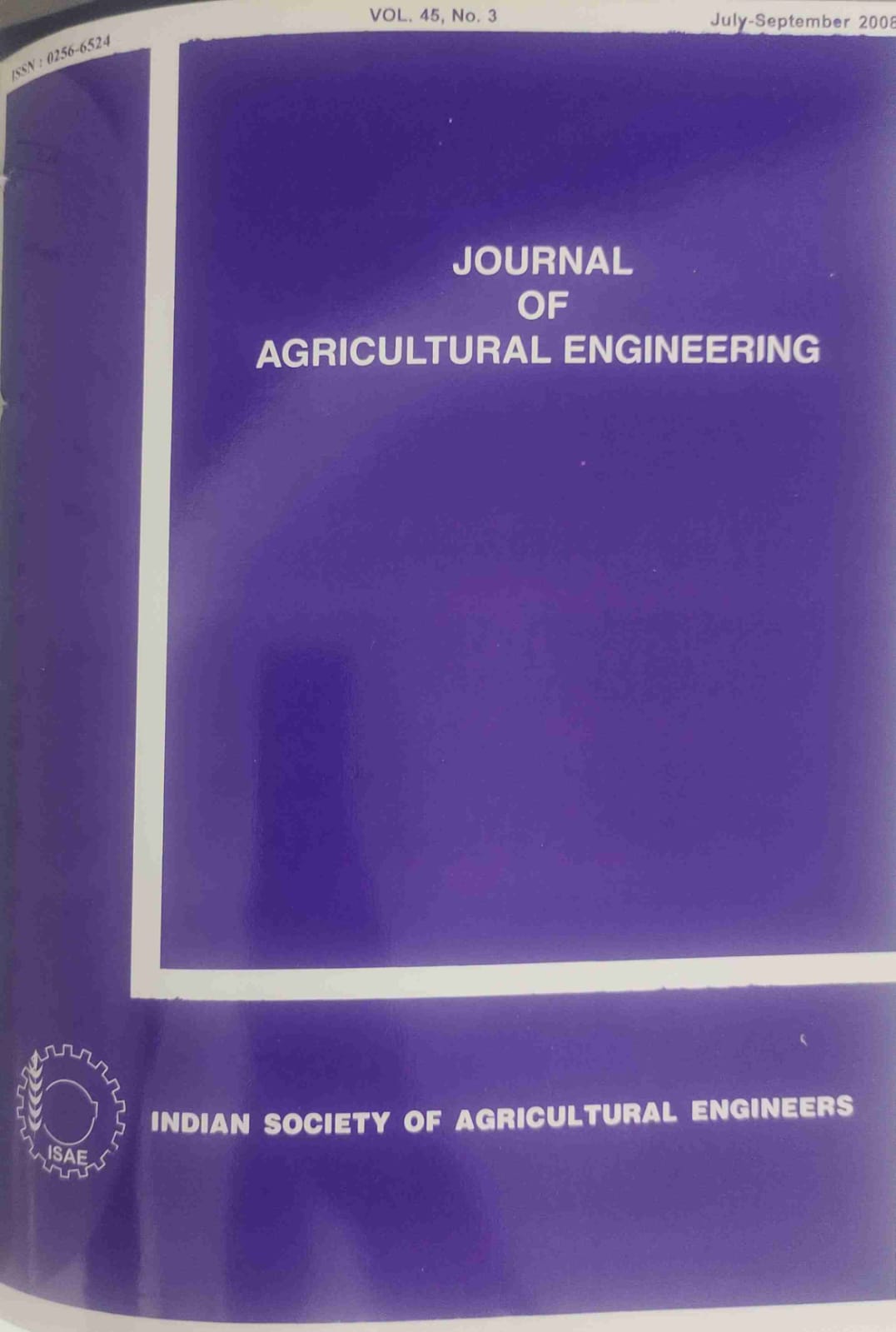Performance Evaluation of Injection Wells for Groundwater Recharge
DOI:
https://doi.org/10.52151/jae2008453.1335Abstract
The study was conducted to determine the performance of injection wells for groundwater recharge using surface runoff with respect to its groundwater recharging potential and impact on groundwater quality. The mean recharge rates of21.2 m3day' and 8.0 m3d-1were observed for injection wells installed below water table (saturated zone) and above water table (vadose zone), respectively. The results indicated that recharge rates increased with increase in recharge head and the incremental increase (increase in injection rate per meter increase in recharge head) was 20 m3d-'m-1 and 8.66 m3d-1m-1 for the well installed in the saturated and the vadose zone, respectively. It was also found that injection rate was more for the well constructed in the saturated zone than the injection well installed in the vadose zone since soil formation of the former had higher proportion of coarse sand mixed with gravel. The laboratory analysis of pre and post recharge groundwater samples has shown considerable change in chemical and biological qualities. The EC and pH values decreased for both the cases. The Na and K concentrations in groundwater increased after recharge at vadose zone recharge site. Similarly, Most Probable Number (MPN /1 00 m!) and Chemical Oxygen Demand (COD) for saturated and vadose zone recharge sites were found to be 26,65 and 110 and 175 ppm respectively whereas for pre recharge water samples corresponding values were 0 and 10.
References
Anonymous. 1972. Handbook of Hydrology. Soil Conservation Department, Ministry of Agriculture, New Delhi.
Bouwer H. 2002. Artificial recharge of groundwater: hydrogeology and engineering. Hydrogeol J. 10,121-142
CGWB. 2000. Annual Report, 2000-01. Central Ground Water Board, New Delhi, India.
CWC. 2000. Water and Related Statistics. Central Water Commission, New Delhi, India
Kaledhonkar M J; Singh 0 P, Ambast S K; Tyagi N K; Tyagi K C. 2003. Artificial Groundwater Recharge through Recharge Tube Wells: A Case Study. J. Institution of Engineers, 84: 28-32.
Milton W L; Martin A H. 1984. Interval Estimation of the Density of Organisms Using a Serial-Dilution Experiment. Biometrics 40(4), 907-916.
Moench M. 2000. India Groundwater Challenges. http://www.india-seminar/2000/480%20moench.html.
Murray E C; Tredoux G. 2002. Borehole injection tests in Windhoek's fractured quartzite aquifer. Proceedings of the 4th international symposium on artificial recharge of groundwater, ISAR-4, A.A. Balkema Publishers, Adelaide, South Australia.
Peters J H. 1985. Borehole recharge in water supply. Hydrogeology in the service of man, Memories of the 18th congress of the IAH, Cambridge.
Phien-wej N; Giao PH; Nutalaya P.1998. Field experiment of artificial recharge through a well with reference to land subsidence control. Eng. Geol. 50,187-201.
Saksena R S. 2000. Conjunctive Use of Surface and Groundwater, State of Art Report, Indian National Committee on Hydrology, Roorkee, India.
Shah T; Molden D; Sakthivadivel R; Sekler D. 2000. The Global Groundwater Situation: Overview of Opportunity and Challenges, International Water management Institute, Colomb.
Shammam M I. 2008.The effectiveness of artificial recharge in combating sea water intrusion in Salalah coastal aquifer. Oman. Environ Geo!. 55:191-204. Soil Conservation Service. 1972. National Engineering Handbook, Section 4, Hydrology, USDA, Washington, D.C.
van Duijvenbode S W; Olsthoorn T N. 2002. A pilot study of deep-well recharge by Amsterdam Water Supply. Proceedings of the 4th international symposium on artificial recharge of groundwater, ISAR-4, A.A. Balkema Publishers, Adelaide, South Australia, 447-451.
Voudouris K; Diamantopoulou P; Giannatos G; Zannis P. 2006 Groundwater recharge via deep boreholes in the Patras Industrial Area aquifer system (NW Peloponnesus, Greece). Bull. Eng. Geol. Env., 65, 297308














